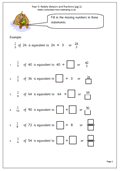 Next week we deal with larger numbers and estimating on a number line. This is a much trickier exercise than it first appears. Firstly, children need to be confident with reading large numbers and counting in thousands. Secondly they need to be able to visualise marks on a scale.
Next week we deal with larger numbers and estimating on a number line. This is a much trickier exercise than it first appears. Firstly, children need to be confident with reading large numbers and counting in thousands. Secondly they need to be able to visualise marks on a scale.
By Year 3 children should be familiar with the names of 5 and 6 sided shapes: pentagons and hexagons. Usually these shapes are seen in a regular form and children do not always recognise them when they are irregular. Next week’s mini investigation will help with this. A geoboard is a great help. Schools already have these, but at home it is easy enough to make one – just 9 short nails evenly spaced in a block of wood and some elastic bands are all that is needed.
We will also be publishing the second in our Year 6 revision sheets for dividing decimals by 10 or 100, ‘in your head’. A good understanding of place value is needed for this as there is little to do apart from move the numbers to the right. One place to the right divides by 10. Two places to the right divides by 100.








